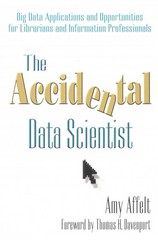Question
Please solve the problem and post the entire program and the whole output: Modify the dfs.java program (Listing 13.1) to display a connectivity table for
Please solve the problem and post the entire program and the whole output:
Modify the dfs.java program (Listing 13.1) to display a connectivity table for a
directed graph, as described in the section Connectivity in Directed Graphs.
LISTING 13.1 The dfs.java Program
// dfs.java
// demonstrates depth-first search
// to run this program: C>java DFSApp
////////////////////////////////////////////////////////////////
class StackX
{
private final int SIZE = 20;
private int[] st;
private int top;
// -----------------------------------------------------------
public StackX() // constructor
{
st = new int[SIZE]; // make array
top = -1;
}
// -----------------------------------------------------------
public void push(int j) // put item on stack
{ st[++top] = j; }
// -----------------------------------------------------------
public int pop() // take item off stack
{ return st[top--]; }
// ------------------------------------------------------------
public int peek() // peek at top of stack
{ return st[top]; }
// ------------------------------------------------------------
public boolean isEmpty() // true if nothing on stack-
{ return (top == -1); }
// ------------------------------------------------------------
} // end class StackX
////////////////////////////////////////////////////////////////
class Vertex
{
public char label; // label (e.g. A)
public boolean wasVisited;
// ------------------------------------------------------------
public Vertex(char lab) // constructor
{
label = lab;
wasVisited = false;
}
// ------------------------------------------------------------
} // end class Vertex
////////////////////////////////////////////////////////////////
class Graph
{
private final int MAX_VERTS = 20;
private Vertex vertexList[]; // list of vertices
private int adjMat[][]; // adjacency matrix
private int nVerts; // current number of vertices
private StackX theStack;
// -----------------------------------------------------------
public Graph() // constructor
{
vertexList = new Vertex[MAX_VERTS];
// adjacency matrix
adjMat = new int[MAX_VERTS][MAX_VERTS];
nVerts = 0;
for(int j=0; j
for(int k=0; k
adjMat[j][k] = 0;
theStack = new StackX();
} // end constructor
// -----------------------------------------------------------
public void addVertex(char lab)
{
vertexList[nVerts++] = new Vertex(lab);
}
// -----------------------------------------------------------
public void addEdge(int start, int end)
{
adjMat[start][end] = 1;
adjMat[end][start] = 1;
}
// ------------------------------------------------------------
public void displayVertex(int v)
{
System.out.print(vertexList[v].label);
}
// ------------------------------------------------------------
public void dfs() // depth-first search
{ // begin at vertex 0
vertexList[0].wasVisited = true; // mark it
displayVertex(0); // display it
theStack.push(0); // push it
while( !theStack.isEmpty() ) // until stack empty,
{
// get an unvisited vertex adjacent to stack top
int v = getAdjUnvisitedVertex( theStack.peek() );
if(v == -1) // if no such vertex,
theStack.pop();
else // if it exists,
{
vertexList[v].wasVisited = true; // mark it
displayVertex(v); // display it
theStack.push(v); // push it
}
} // end while
// stack is empty, so were done
for(int j=0; j
vertexList[j].wasVisited = false;
} // end dfs
// ------------------------------------------------------------
// returns an unvisited vertex adj to v
public int getAdjUnvisitedVertex(int v)
{
for(int j=0; j
if(adjMat[v][j]==1 && vertexList[j].wasVisited==false)
return j;
return -1;
} // end getAdjUnvisitedVertex()
// ------------------------------------------------------------
} // end class Graph
////////////////////////////////////////////////////////////////
class DFSApp
{
public static void main(String[] args)
{
Graph theGraph = new Graph();
theGraph.addVertex(A); // 0 (start for dfs)
theGraph.addVertex(B); // 1
theGraph.addVertex(C); // 2
theGraph.addVertex(D); // 3
theGraph.addVertex(E); // 4
theGraph.addEdge(0, 1); // AB
theGraph.addEdge(1, 2); // BC
theGraph.addEdge(0, 3); // AD
theGraph.addEdge(3, 4); // DE
System.out.print(Visits: );
theGraph.dfs(); // depth-first search
System.out.println();
} // end main()
} // end class DFSApp
////////////////////////////////////////////////////////////////
Use this MAIN method below (Do NOT modify it) :
public static void main(String[] args)
{
Graph theGraph = new Graph();
theGraph.addVertex('A'); // 0 (start for dfs)
theGraph.addVertex('B'); // 1
theGraph.addVertex('C'); // 2
theGraph.addVertex('D'); // 3
theGraph.addVertex('E'); // 4
theGraph.addEdge(0, 2); // AC
theGraph.addEdge(1, 0); // BA
theGraph.addEdge(1, 4); // BE
theGraph.addEdge(3, 4); // DE
theGraph.addEdge(4, 2); // EC
System.out.println("Connectivity Table");
theGraph.makeTable();
System.out.println(" ");
theGraph.adjMatDisplay();
} // end main()
You MUST get this output in form and content:
Result:
Connectivity Table
AC
BACE
C
DEC
EC
A B C D E
==========
A 0 0 1 0 0
B 1 0 0 0 1
C 0 0 0 0 0
D 0 0 0 0 1
E 0 0 1 0 0
Step by Step Solution
There are 3 Steps involved in it
Step: 1

Get Instant Access to Expert-Tailored Solutions
See step-by-step solutions with expert insights and AI powered tools for academic success
Step: 2

Step: 3

Ace Your Homework with AI
Get the answers you need in no time with our AI-driven, step-by-step assistance
Get Started


